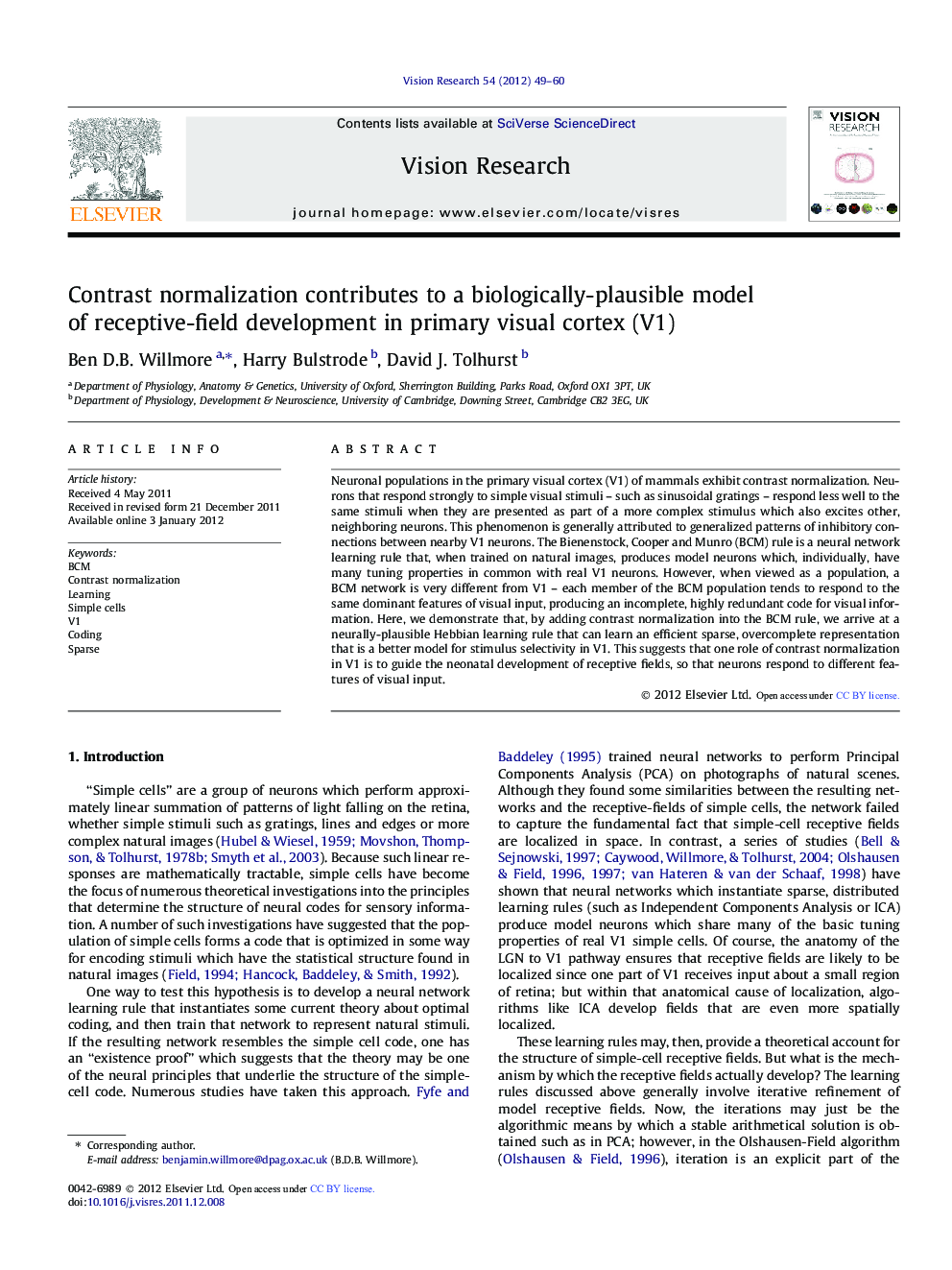| Article ID | Journal | Published Year | Pages | File Type |
|---|---|---|---|---|
| 6203730 | Vision Research | 2012 | 12 Pages |
Neuronal populations in the primary visual cortex (V1) of mammals exhibit contrast normalization. Neurons that respond strongly to simple visual stimuli - such as sinusoidal gratings - respond less well to the same stimuli when they are presented as part of a more complex stimulus which also excites other, neighboring neurons. This phenomenon is generally attributed to generalized patterns of inhibitory connections between nearby V1 neurons. The Bienenstock, Cooper and Munro (BCM) rule is a neural network learning rule that, when trained on natural images, produces model neurons which, individually, have many tuning properties in common with real V1 neurons. However, when viewed as a population, a BCM network is very different from V1 - each member of the BCM population tends to respond to the same dominant features of visual input, producing an incomplete, highly redundant code for visual information. Here, we demonstrate that, by adding contrast normalization into the BCM rule, we arrive at a neurally-plausible Hebbian learning rule that can learn an efficient sparse, overcomplete representation that is a better model for stimulus selectivity in V1. This suggests that one role of contrast normalization in V1 is to guide the neonatal development of receptive fields, so that neurons respond to different features of visual input.
⺠Contrast normalization can be introduced to a BCM neural network. ⺠The resulting network efficiently represents natural images. ⺠Contrast normalization prevents redundant representation of image structure. ⺠Neurally plausible model for neonatal development of receptive fields in V1.
